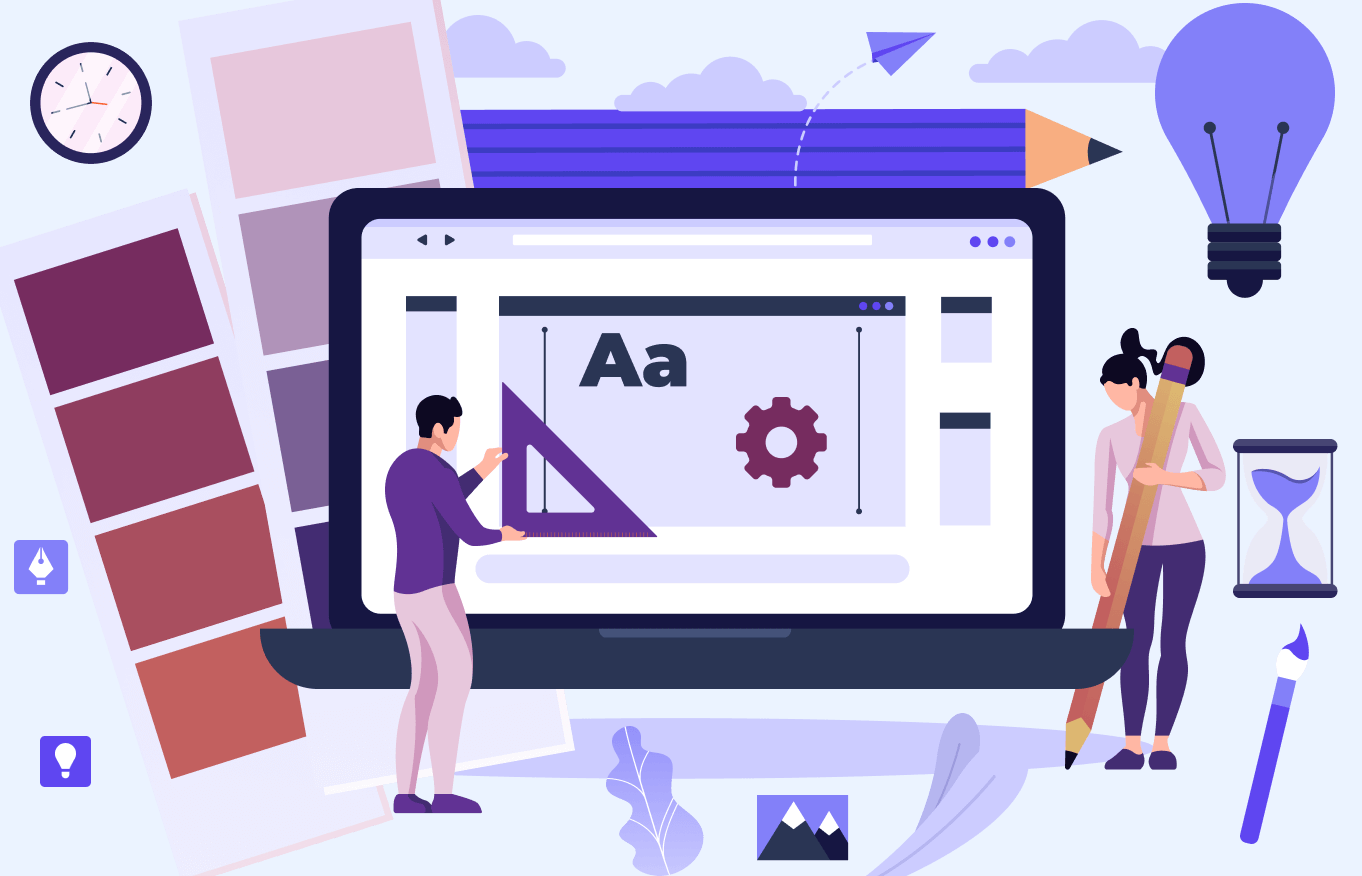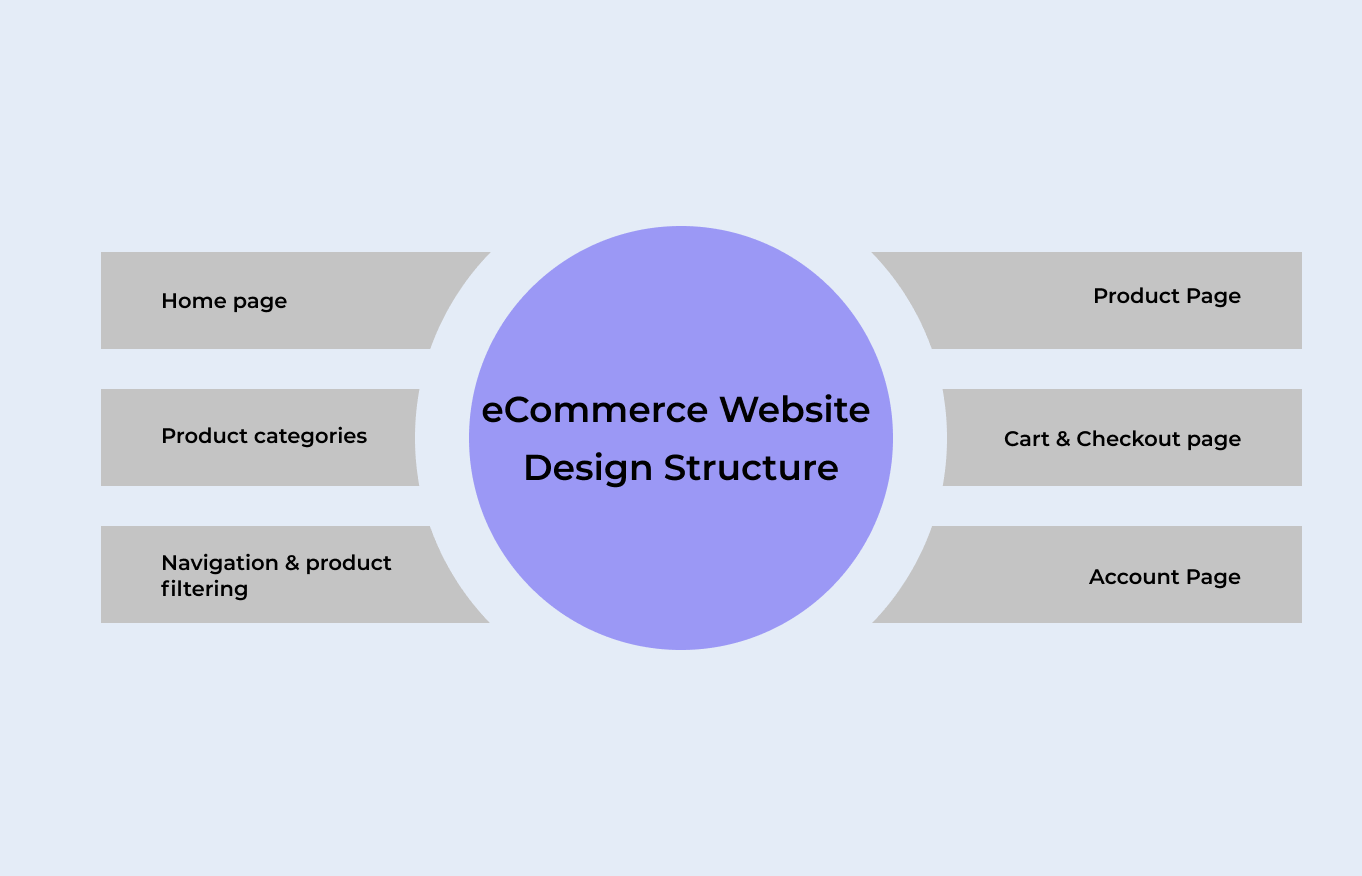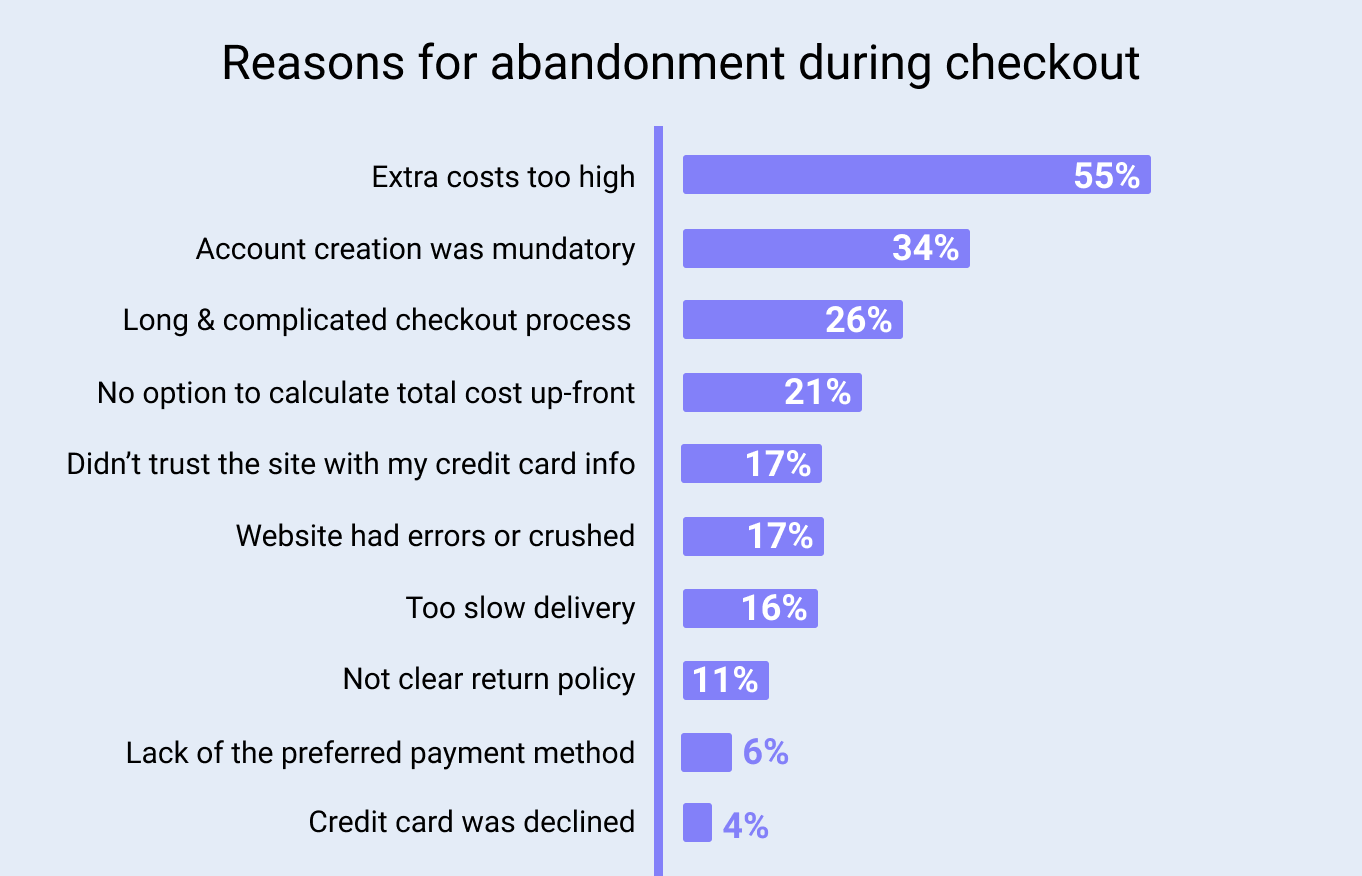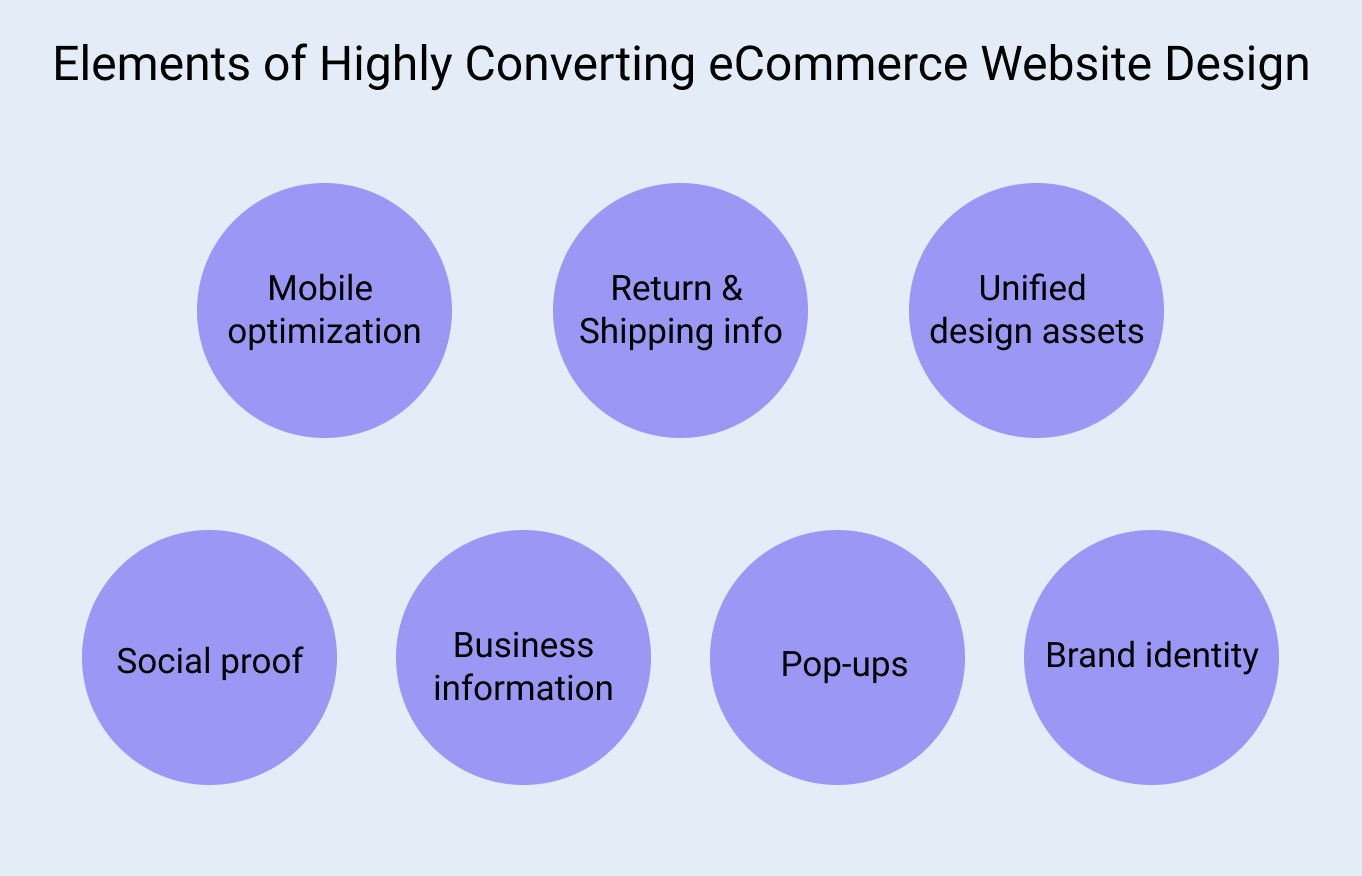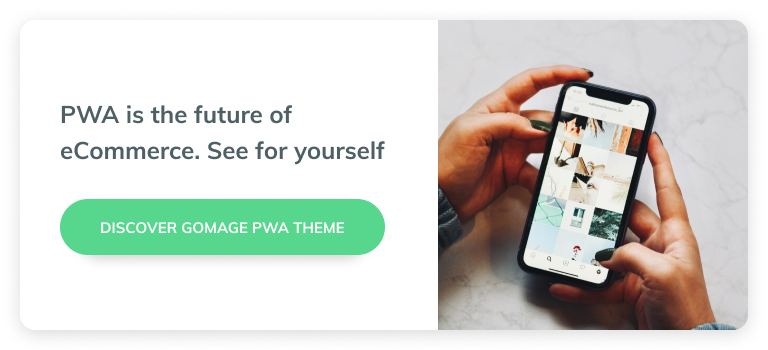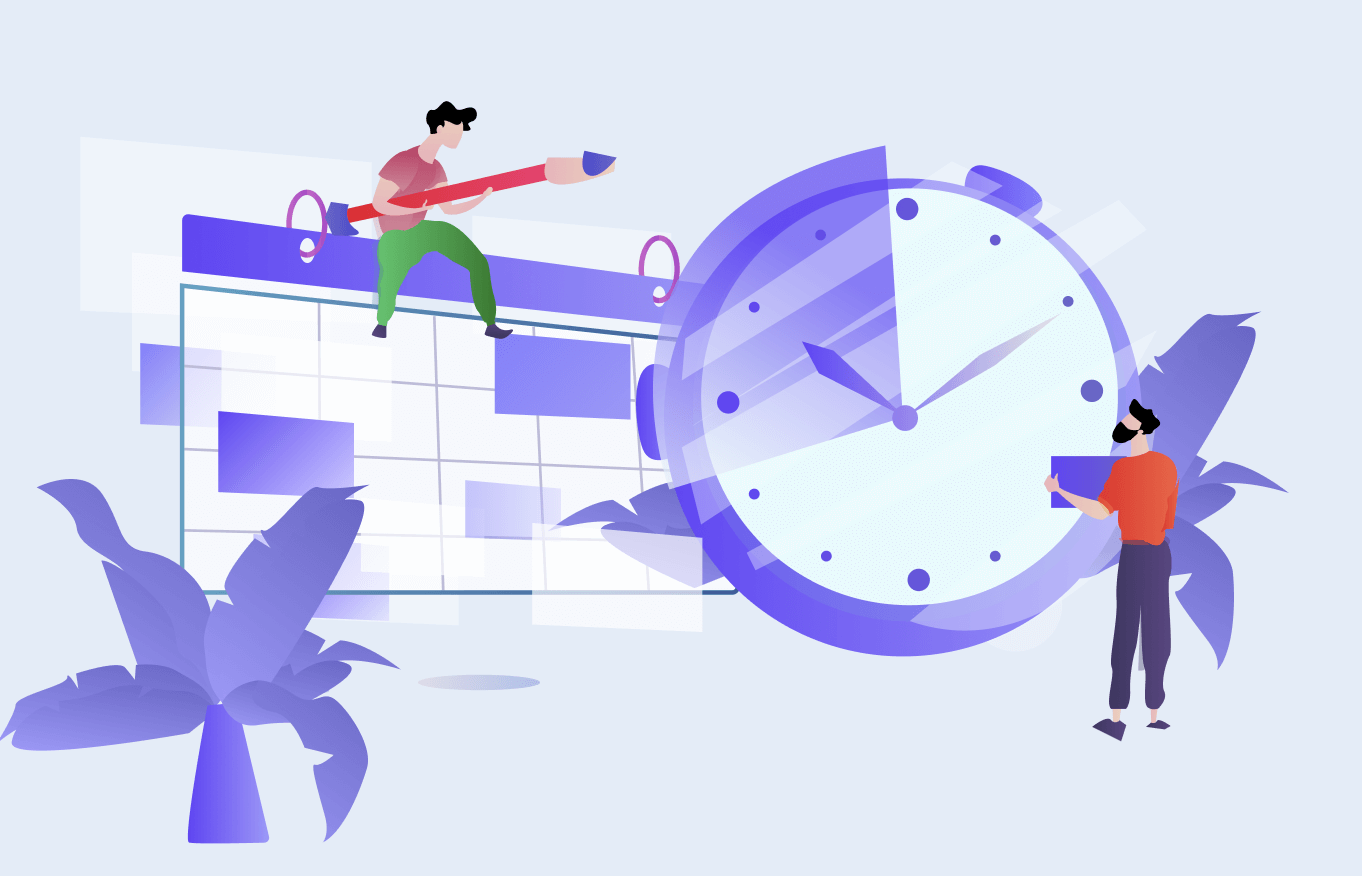Did you know that there are 12-24 million eCommerce websites worldwide, making it one of the most competitive business areas? Only some of them succeed in converting customers.
It is not enough to design an eCommerce website. You need to know how to design an eCommerce website that will stand out among millions of competitors, utilize the best UX and UI practices, and offer seamless shopping experience. In order to achieve that goal, it is important to understand the main principles of successful eCommerce web design.
This article highlights the main points that you should know about eCommerce website design. While reading, you will find an overview of the following aspects:
- why invest in eCommerce web design + main statistics
- design eCommerce website customly + key benefits
- how to create an attractive eCommerce website design + main pages & useful tips
- time and cost for eCommerce web design
Why Invest in eCommerce Web Design
There is no doubt that the eCommerce industry is evolving quickly. Recent statistics prove that online sales are an attractive sphere for investment. Fewer shoppers will be ready to spend hours roaming huge malls. Instead, they will be turning to online shopping. Nasdaq predicts that by 2040, eCommerce will be generating up to 95% of all sales.
Even if we look at a short-term prediction, it is no less promising. According to Statista research, by the end of 2019, the number of online buyers will reach 1.93 billion. This figure will grow even more by 2021 – to 2.14 billion. The occurrences when customers turn to online stores are facilitated by cost-savings and convenience as compared to local stores.
Online stores generate billions of dollars. In fact, worldwide eCommerce sales will cross the point of $4 trillion by 2020. Predictions for 2021 are even more impressive. Online sales will generate $4.88 trillion and will continue to grow in the upcoming years.
With an effective eCommerce web design, you will be able to take a part of a very lucrative pie and avoid the main pitfalls. eCommerce website design plays an important role in the success of an online store. Baymard Institute named too long and complicated checkout process one of the main reasons for cart abandonment. In fact, 23% of customers complained about it.
The above statistics leave no place to doubts regarding the importance of eCommerce design for the overall success of an online store. That is why by working with eCommerce website designers, you get a guarantee that your website will be designed with the best UX/UI practices.
Design eCommerce Website Customly
Now that you have learned about why it is worth investing in professional eCommerce website design let’s look at the main techniques that are used to design an eCommerce website. The information below will help you decide on the method that will be most suitable for your project.
- Use of eCommerce website design templates + small changes
Magento and third-party developers provide users with hundreds of paid and free ready-to-use themes. They help to save money on eCommerce web design services and provide an easy way to set up a store and make it live in a short time.
If you decide that this approach to eCommerce website design is the best fit for you, it is recommended to make some changes to the template you choose, like adding brand colors, logos, website design graphics, and other elements of your branding.
- Use of a template + unique design
In some cases, you might like the eCommerce website layout that a template offers but want to add some unique elements. By going with this type of design, you will be able to add a few special touches to your future online store. Still, it will not allow you to design an eCommerce website with a unique layout and design.
- Custom design
This option might be the best choice if you decide to design a unique online store that will be unlike other available solutions. If you opt for custom eCommerce web design, you will need to hire professional eCommerce website designers who know all the main principles of online store layout, user experience, and user interface. A professional designer will be able to utilize the knowledge to create a highly converting design for every single page of your store.
What is the best website for eCommerce?
Custom eCommerce design is a great solution if you want to have a website that will stand out among competitors. The benefits of it are as follows:
- storefront with unique look and layout that matches your brand identify
- user-friendly interface
- professional feel and look
- focused on customers and their needs
- SEO friendly
eCommerce Website Design: How to Create an Attractive Interface from Scratch
When designing a website for business needs, it is important to create UX and UI for the main elements of eCommerce web design. Each online store consists of a lot of pages, including home, product, checkout, and many others. We will look at the process of their creation below.
eCommerce Web Design: Main Pages to Create
Before you start eCommerce designing, it is a good idea to find the answer to one relevant question first that will help you structure all the tasks for eCommerce web designers.
What should a good eCommerce website include?
Usually, every web store design includes the following pages that should be properly designed:
- home page
- product categories
- navigation & product filtering
- product page
- cart page
- checkout page
- my account page
Also, it is important to create a navigation that will help users easily skim through the contents of your store and find the needed products. Continue reading to find out how to design an eCommerce website that will include all the necessary elements.
- eCommerce homepage design
Home page is the face of your eCommerce business. In most cases, it is the first page that customers see when they land on your website. eCommerce homepage layout should be well-categorized, uncluttered, and eye-catching. What is most important, you need to show the trustworthiness of your business right away. eCommerce website design that is compelling and efficient will do the job.
eCommerce homepage design usually has a place where you can place your special offers, highlight bestsellers, best deals, and discounts. Home page is a perfect place for them as it is often a starting point for your customers.
- Navigation
eCommerce homepage is directly interconnected with navigation, which consists of the following elements that play a vital role in the creation of a seamless shopping experience.
-
Product Categories
Product categories are a very important part of eCommerce website design. These are usually situated in the top navigation bar with subcategories included. All categories should be structured based on their use, type, intended use, brand, etc. It is recommended to name categories with a single word that best describes them.
-
Product search
The main task of any web store is to provide users with a simple way of finding the products they need. When working on eCommerce web design, do not forget to include this feature in the list of design requirements.
The product search option should be omnipresent throughout the website, support different kinds of queries, provide an auto-complete option, and allow sorting the results by brand, lowest or highest price, etc. An experienced eCommerce designer will be able to identify the main needs of your business and create a product search that will be easy-to-use, and that will supplement the overall eCommerce website design.
-
Product filtering
Every store has hundreds or hundreds of thousands of SKUs, making it challenging for customers to find relevant products. That is why product filtering is an integral part of eCommerce web design. Your customers need to have a way to find what they are looking for in as simple a way as possible.
- Product page design
In a perfect eCommerce website design, after users find the product they were looking for, you provide them with the information on that product. When you are designing an eCommerce website, you should pay close attention to product pages.
The main difference between physical stores and online shopping is that customers cannot touch the products they want to buy. That is why the task of eCommerce designers is to create such an online experience that will be as close to in-person shopping as possible.
The inclusion of the following elements in eCommerce web design will help to accomplish the task successfully:
- Product images – should be of high quality, showcase products from different sides and angles. It is recommended to use a white background that helps products to stand out. If you feel like a video might show an item in more detail, you can also place it on product pages.
- Product description – also an integral part of eCommerce website design that should include the main specifications of products, their dimensions, color, materials they are created of, model, year of products, and other relevant data. There is a direct dependence between the product information and the likelihood of orders. When you provide customers with all the necessary information, it decreases the number of questions they have and speeds up the process of decision making.
- Product ratings – allows customers to rate products and show the ratings on product pages. It is crucial to remember about this element when you design an eCommerce website as it improves trust in your store and makes buyers feel safe making purchases.
- Related & recommended products – by showcasing products similar to ones that customers view is a good way to cross-sell. Such products are usually displayed on product pages and have become over the years an essential part of eCommerce website design as they assist in increasing sales.
- Shopping cart website design
When you are considering how to design an eCommerce website, do not forget about shopping carts. This is one of the main elements of the customer journey with your website, as it is the place where the final shopping decision is made. Depending on how you design a shopping cart, you can either increase the chance that buyers will proceed with the purchase or abandon the shopping cart.
The design of a shopping cart should include the following elements:
- Clear notifications – as soon as customers add a product to the shopping cart, they should be able to see clear confirmation of the action. They should not wonder whether an item was added or not. There are many ways in which web designers can achieve the needed result, and one of them is the utilization of an animation, e.g. when a product moves to the cart icon.
- Mini cart – an integral part of any eCommerce website design that allows buyers to quickly add products to their cart without leaving a product page or category page of the store.
- Product details – quite often, customers add more products to their shopping cart than they intend buying to choose one of them later. That is why it is important to the main product details in the shopping cart.
- Editable products – shopping cart website design should also allow users to edit products they have added, like removing them from the shopping cart, saving for later, and changing other details like quantity, size, color, etc.
- CTA – even though customers have added products to their shopping carts, it does not necessarily mean they are going to proceed with the purchase. That is why when you design an eCommerce website, prepare a place for a clear CTA. The button should lead to the checkout page.
- Checkout eCommerce design
The fewer steps customers need to make to finish the purchase, the more likely they actually buy from a store. The best eCommerce website designers understand this and know how to design a checkout process not to lose customers at this final step. Below you can see the main reasons for cart abandonment according to Baymard University, and one of them is a poor eCommerce website design with an over-complicated checkout process.
Here are a few tips that will help to ensure smooth UX when visitors get to the checkout process:
- Simple and fast – that is how the checkout process should be to customers. Keep the number of steps and fields to fulfill to a minimum. eCommerce website design with a single-page checkout is considered to be the best solution that will not scare buyers away.
- Multiple payment options – shoppers should be able to see the available options right away so that they could make a choice.
- Optional registration – the research also indicates that it might not be the best choice to force users to create an account with your website. This should be displayed in your eCommerce web design. Give your customers the ability to decide for themselves.
- Progress bar – when you create an eCommerce website design, you might need to implement a multi-page checkout process. Nothing is more frustrating than not knowing how long it will take before you make a purchase. By including a progress bar, you will keep customers on track of what is happening and how long it will take until they get to the final point.
- Clear error messages – not being able to complete a purchase is depressing. Not knowing what the problem is all about is even more daunting. That is why when you design an eCommerce website, you need to also include clear error messages that explain why customers cannot proceed with the checkout process.
These are the main pages and elements that you should remember during online store designing. As you are working on your eCommerce web design, you might realize that there are more components that your store needs to have. If you hire eCommerce web designers, you will not have to worry about keeping all the aspects of eCommerce website design in mind. Professionals with experience in designing eCommerce websites will be able to take on the job and offer the best solutions for the future development of a robust eCommerce store.
Interested in knowing how much an eCommerce website costs?
Check out the article How Much Does a Magento 2 Website Cost: Editions, Services, & Additional Expenses, where we have provided an in-depth overview of all expenses that go into the budget that is needed for Magento 2 website development.
Design eCommerce Website: Tips that Will Bring Customers
Design is the first thing customers will see when they enter your store. For this reason, it might be better to understand that eCommerce website design is not only about great pictures and intricate features. It is about customers and their needs.
How can you make your eCommerce website more attractive?
Below are listed the main aspects of eCommerce web design that you should pay special attention to. By following the best practices, you will be able to create a highly converting store.
- Mobile optimization
In 2018, nearly 40% of all retail sales in the US came from mobile devices. mCommerce is going to flourish in the years to follow. That is why mobile optimization is an essential part of eCommerce website design and development.
- Unified design assets
Your store should guide visitors to the checkout page, not distract them with intricate and colorful fonts of different sizes. Design an eCommerce website with a limited number of fonts and sizes.
- Social proof
Customer testimonials and reviews serve as the best social proof. By showing them on your website, you increase your trustworthiness in the eyes of customers. So, make sure to have a place in your eCommerce website design for them.
- Business information
Another method of showing your trustworthiness is to publish information about your company, post photos of people that always remain behind the scenes, link to social media, FAQ, shipping and return policies, etc.
- Pop-ups
Windows that pop up create a distraction for customers. Yet, they are very often considered to be a vital part of the eCommerce website design. Even if they show important information or a special offer, visitors are very likely to dismiss them on the first sights and then struggle looking for the information they saw on the window. Use pop-ups sparsely to create an undisrupted shopping experience.
- Brand identity
Branding is an integral part of eCommerce web design. You need to ensure brand image consistency, the use of brand colors, and style elements. These should be used throughout your website and across all communication channels. This way, customers will easily recognize a store and build a stronger relationship with it.
- Tell the truth
Return policy and shipping info often become a place where sellers try to stretch the truth. By providing misleading information, sellers not only ruin their reputation, but they also disappoint customers. Always being honest with customers is the main rule you should follow, no matter what. Otherwise, eCommerce website design will not be able to save your web store from failure.
eCommerce Website Design: Timeline & Cost
Now that you know about the main principles of successful eCommerce website design, it is time to find out the answer to another important question.
How much does it cost to design an eCommerce website?
As we already mentioned, when you design an eCommerce store, you can choose one of three design types:
- eCommerce website design template with small changes
- template with a unique design
- custom eCommerce website design
The first two types take less time to create as compared to custom design. Yet, they do not provide such a unique feel and touch as a customly built website. The eCommerce website design price varies accordingly. If you are still hesitating which one is the right solution for your project, take a look at the table below. It showcases the difference in price and timeline for each option.
| Template + small changes | Template + design | Custom eCommerce Design | |
|---|---|---|---|
| Cost | €800+ | €2,000+ | €5,000+ |
| Timeline | from 1 week | 3-5 weeks | from 1 month |
After taking into account everything said above, it should not come as a surprise that many stores decide to use the least expensive eCommerce website design. At the same time, those that go for custom design get a web store with a unique UX/UI that is aligned to business needs and target audience.
Bottom Line: GoMage Expertise to Design eCommerce Website
Design is an integral part of eCommerce web development and the main criterion by which customers judge a store. For this reason, it is important to go to professional eCommerce website designers that know all the ins and outs of designing web stores.
Over the years, GoMage has successfully designed and developed 900+ Magento eCommerce projects. Our broad experience allows us to create an eCommerce website design that is highly converting, provides a smooth UX, and has an attractive interface.

